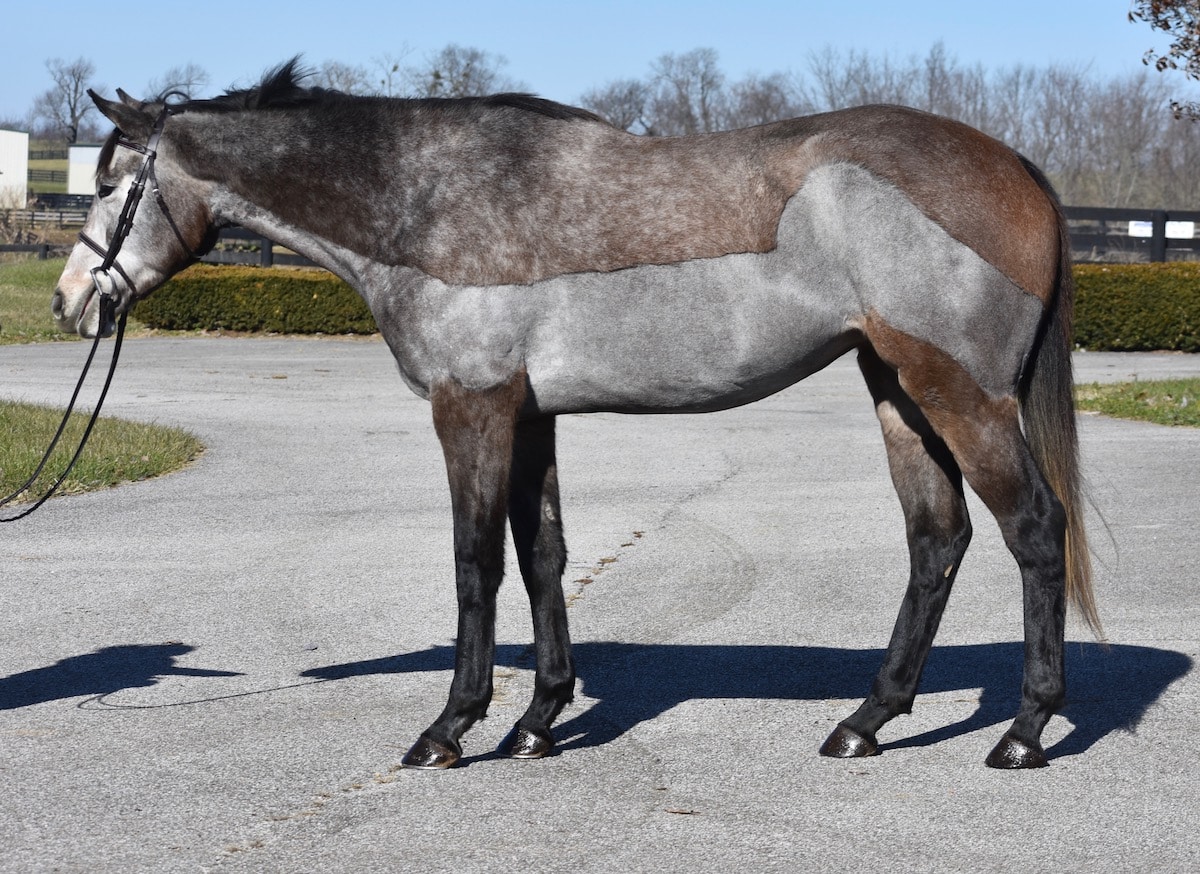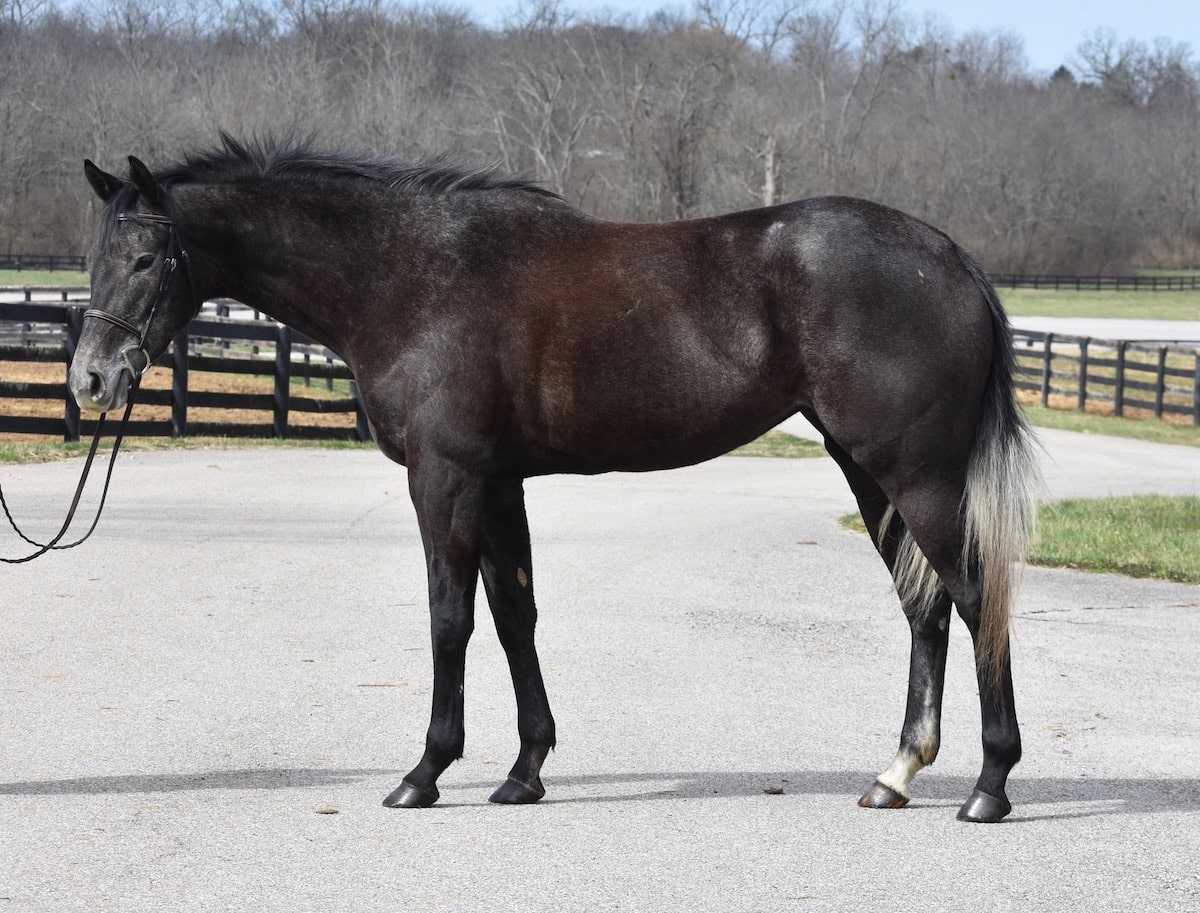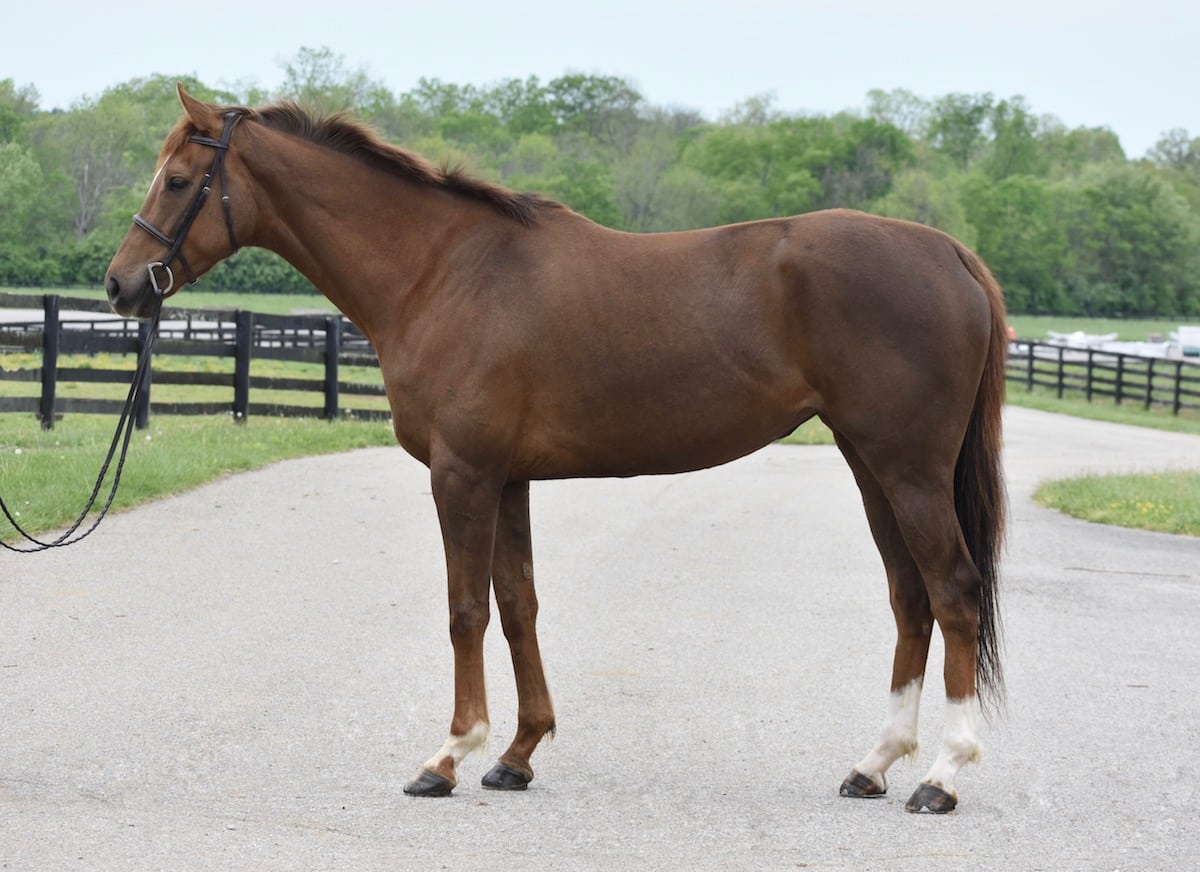Social media has enabled potential OTTB owners to review a large number of retiring Thoroughbred racehorse listings at any time. Newcomers to the breed might find it challenging to consider a prospect right off the track and decide if it’s a match for their desired purpose.
In this column veteran Thoroughbred Makeover trainers share their thoughts about assessing and selecting prospects based only on conformation photos. In honor of 2021’s “Mega-Makeover,” we’re sharing the insights from each competition year from the same discipline.
Our Trainers
■ Alison O’Dwyer, 2021 Thoroughbred Makeover Dressage winner with Kubo Cat
O’Dwyer has found her niche identifying and developing young Thoroughbreds for second careers, with a strong background in eventing and dressage. She has evented through the CCI*** level and earned her United States Dressage Federation (USDF) bronze medal. Self-described as “an eventer who loves dressage,” O’Dwyer has experienced success at the Makeover in both disciplines.
■ Helen Pianca, 2020 Dressage winner with Elbow Room
Growing up in eventing, Pianca got her first Thoroughbred because, in her words, “everyone who was anyone in the eventing world had a Thoroughbred.” She ended up showing that horse to Prix St. Georges and credits the experience with solidifying her desire to become a professional in the horse industry. Despite being surrounded by Warmbloods in the dressage ring, she continued to love Thoroughbreds and works with the breed to this day, having earned her USDF bronze and silver medals with OTTBs.
Choosing a Horse
Alison O’Dwyer, who trains out of Boynton Beach, Florida, and Helen Pianca, whose operation is based in Granville, Ohio, agree on their favorite points of conformation: an uphill build, well-set neck and solid feet. They also agree that conformation doesn’t always tell the whole story. “Some of the most downhill-built horses use their bodies in a very uphill way,” says Pianca. “That’s why seeing them move is so important.”
Pianca also notes that when watching movement, she wants to see a horse look very sound: “I don’t mind old injuries and blemishes, but I won’t touch the cleanest-legged horse in the world if it trots ‘iffy’ on a hard surface.”
That’s one of the reasons she prefers to see her prospects in person and, if possible, get to throw a leg over — something that can be challenging in today’s often sight-unseen Thoroughbred market.
“The next best strategy I have come up with to not miss a good deal on a horse is to have my trailer hooked up and ready and cash in hand so that I can go the same day or next morning when a horse is posted,” she says. “I’m always prepared to not buy the horse and drive home with an empty trailer, though.”
O’Dwyer has built a personal network of racing connections through which she finds most of her horses. “When I have an empty stall, I make sure to reach out to those people and let them know,” she says. “It’s easy for people to get busy and not have you at the forefront of their thinking.” That said, she’s also purchased horses from online or social media listings, often with the help of trusted friends with good referrals.
When evaluating prospects and their mental soundness, both Pianca and O’Dwyer have preferences. “I want to see a horse that is alert and curious about the world,” Pianca says. “Too withdrawn and too fearful are both hard to work with … though I’m much less picky when shopping for myself than when shopping for a student.”
O’Dwyer, on the other hand, looks beyond personality. “I don’t dive too deep because so much of personality — as well as movement — can change once they’ve left the track. I just make sure to buy a horse that is a nice physical specimen that will make someone happy, even if that’s not me, in the long run.”
Meet the Prospects
Our model horses participated in our Picking Prospects demo with Laine Ashker at the 2022 Land Rover Kentucky Three-Day Event and were generously provided by the Secretariat Center.
The Secretariat Center was established in 2004 by racing industry leaders who identified a need to care for horses after their racing careers ended. This focus has helped foster a healthier future for Thoroughbreds and the racing industry as a whole. Hailed as the gold standard for Thoroughbred reschooling, the Secretariat Center’s mission is to prepare off-track Thoroughbreds for happy, healthy and successful post-track careers. The organization rehabilitates and gives each horse a broad-based foundation of skills and then works with a potential approved adopter to place each horse into a home best-suited to their future endeavors. The Secretariat Center advocates for the Thoroughbred’s versatility and athleticism and works to care for and rehome about 50 horses a year. Each of the organization’s horses is tracked for the entirety of its life to ensure it receives good care. Situated on 22 beautiful rolling acres of bluegrass, the Secretariat Center is a nonprofit 501(c)(3) located within the Kentucky Horse Park, in Lexington.
While these three horses might no longer be available for adoption when this issue hits your mailbox, the Secretariat Center has plenty of prospects looking for their next partners.

Calle De Llora (The Factor — Rue De Cry, Street Cry [IRE]) Courtesy Secretariat Center

Princess Grey C (The Factor — Sweet Emmi J, Leroidesanimaux [BRZ]) Courtesy Secretariat Center

Sua Sorella (Albertus Maximus — Sheza Great Friend, Stevie Wonderboy) Courtesy Secretariat Center
O’Dwyer’s Picks
Horse 1 This horse doesn’t have the typical big sloping shoulder I normally hunt for, but she has a lot of other things to like, and the shoulder angle really isn’t bad. I like her feet and legs: Those short cannons and pasterns usually suggest long-term soundness. The hind end is big and open, so it should supply a good amount of power and push. The neck ties in well but could be a bit longer. She has a very sweet eye that should win people over! My gut chooses this horse because all her pieces match, and she gives me a good feeling.
Horse 2 This horse definitely has the neck I look for: very showy, long and elegant. Her shoulder is a nice match to her neck. Both qualities lead me to think this horse would find going “on the bit” more natural than some horses. I do notice this horse’s feet seem a little small for her size, but I’m going to give her the benefit of the doubt because this is the only horse in the lineup that is clearly without shoes.
Horse 3 Really tough decision to put this horse last, because I really like her! She seems sporty, and I’m a sucker for chestnuts. The hip angle is just a bit closed for me. The head, neck and shoulder are more than acceptable, however. Her pasterns are a bit longer and more sloped compared to the other horses’.
Pianca’s Picks
Horse 3 This horse has an overall classy look, but what I really like for dressage is the more upright shoulder and neck. This will allow more freedom for the front legs to reach and a bigger range of motion. Many Thoroughbreds have a good engine, but it’s harder to find ones with the longer and more upright humerus that lends itself to a good extended trot. She could use more muscling on the hind end, but all the angles are correct. She is not built uphill but looks nicely balanced and has a good amount of bone for her size.
Horse 2 I really like this horse, too, and I’m always a sucker for a cute gray! She has a nicely muscled neck and sloping shoulder, though not as sloping as Horse 3. She also has strong-looking hindquarters, but the reason I didn’t put her first is she is on the long side in her back and has a very sloping pelvis angle. This might make collection difficult. She does have a kind expression and would likely make a wonderful lower-level dressage horse.
Horse 1 This horse, while extremely cute, has a low-set neck and short humerus, which tends to give a shorter stride. If you look at the angle made by her pelvis and femur, it’s like a >, while I like to see a dressage horse’s angles look more like a 7, with a flatter pelvis and a long, sloping femur. She does have a strong-looking back and good bone and looks like she could be a lovely, sturdy mount. She also stands with her hind legs naturally under herself, so she might move better than her conformation photo indicates.

